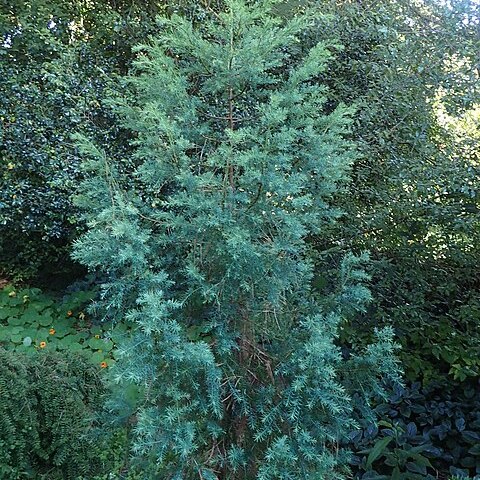Monoecious tree, up to 25 m high, often 7-12 m, bark reddish grey, flaking in thin strips. Leaves: juvenile leaves 10-20 x 2 mm, spreading; adult leaves scale-like, ovate, decussate, semi-circular in section. Male cones very small, usually of 6 pairs of oblong scales. Female cones clustered, of 4 valves, rough, margins with regular tubercles. Fruit cones may take more than a year to ripen, and then persist for several years, may be found on trees all year.
Like W. cedarbergensis but 17-26 m, sometimes to 40 m, and seeds broadly winged.


